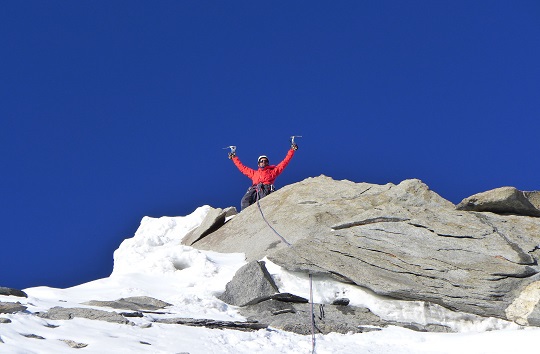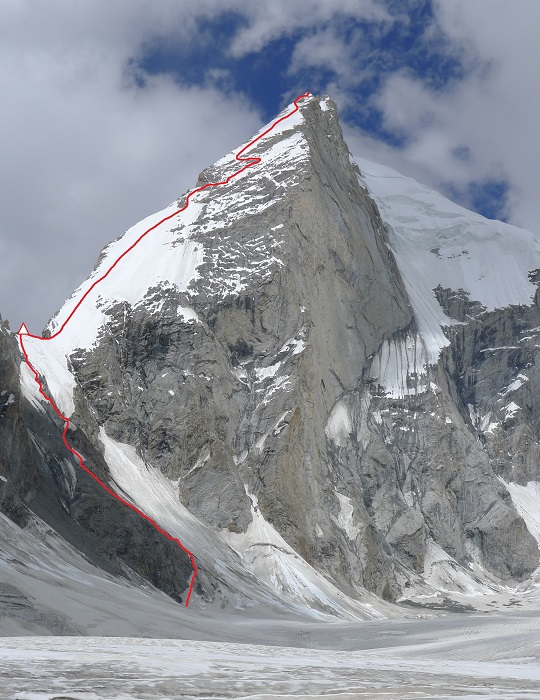
Located in Nangma Valley, an area described by Jonatan Larranaga in Alpinist 19 as being “lost in the immense Karakoram, [with] walls that seem to contain endless new route potential,” Kapura (6544m) lies to the east of K6 (7040m). Upon completing Kapura’s first ascent in 2004 with Doug Chabot, Bruce Miller, Marko Prezelj and Steve Swenson, Steve House wrote in the 2005 American Alpine Journal of the beauty of the Karakoram, saying “the views [from Kapura] of Masherbrum, K2, the Gasherbrum group, and Chogolisa make us all feel resolute to spend the summer climbing in the incomparable Karakoram.” Seeking the same views (and the chance to climb a new route in light style), Paulo Roxo and Daniela Teixeira traveled to Nangma Valley, where they spotted their “dream route,” a line with “no apparent objective hazards like seracs, avalanche prone slopes or rock falling.” On September 6, the duo established a meandering new line on the south face of Kapura to its circa 6350m south summit.
From August 25 to 27, Roxo and Teixeira made an acclimatization trip to the base of Kapura, establishing a base camp on the glacier below. The pair navigated the glacier and scouted lines on Kapura’s south face, finding an elegant spur leading to the south summit. On August 27 at 4 a.m., the duo headed for a col on the southwest spur of the mountain, scrambling 200 meters before roping up for six pitches of snow, ice and easy mixed climbing. Upon reaching the col, Roxo and Teixeira left a small food cache before rappelling down, noting several dangerous pitches exposed to rockfall on the way and disproving their early assessment of the line as having no objective hazards.
Unfavorable weather marked the next few days, prompting Roxo and Teixeira to wait on the glacier for a weather window slated to begin on September 5 and extend for six days. With blue skies and calm winds predicted, the two left base camp on September 5, reaching the bottom of Kapura in around five hours. They spent the night there and set out for the summit at 3 a.m. the next morning.
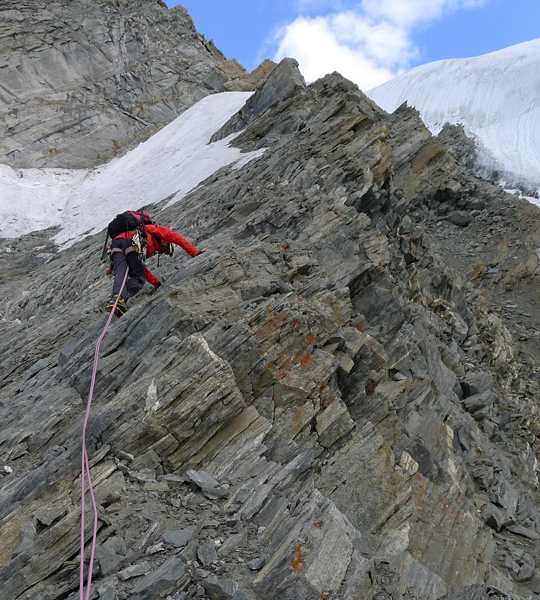
Carrying a bivy tent and all of their gear, Roxo and Teixeira repeated their previous line to the southwestern col at 5700 meters, naming it after their cook’s 13-year-old son, Alam. The two dug a tiny bivy ledge and slept for a few hours.
At 1:30 a.m., the pair awoke for the summit push up the main part of the climb. Encountering a steeper face and hard ice beneath a layer of snow left from the previous days of poor weather, Roxo and Teixeira roped up for the entire climb. The two reached a rock band midway up, after climbing 500 meters of icy slope and chose to traverse right and then left in order to avoid more difficult mixed climbing.
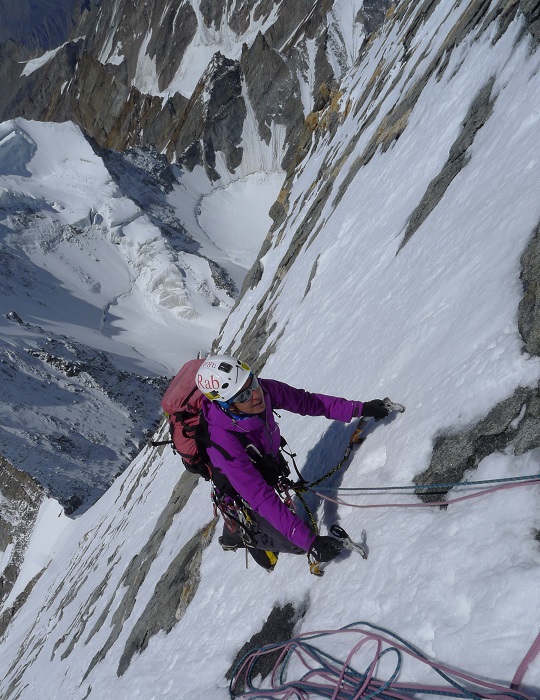
At noon, after a five-pitch traverse, they reached a second ice slope that had degraded to an unconsolidated layer of snow on top of rock during the hours they spent traversing. Adding to the difficulty for them was the ever-increasing possibility of a nighttime descent. “In some moments, we thought about which way to go…up? Or down? The summit looked so close from this point, but the pitches never seemed to have an end,” Teixeira wrote. Ultimately, spurred by the good weather forecast, the pair made the choice to continue up.
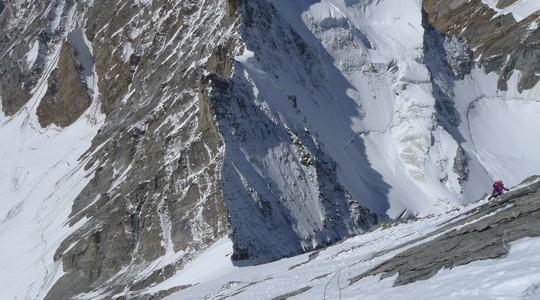
Roxo and Teixeira reached the south summit of the peak on the evening of September 6, eighteen hours after leaving camp. While descending, the two left slings and some pitons, and reached their bivy at Alam’s Col at 3:30 a.m. They spent a rest day at the bivy ledge and descended the final stretch to their camp the following day. The climbers named the 1300m line Never Ending Dreams and graded it M4 70 degrees.
Eleven years before Roxo and Teixeira’s ascent, Steve House asked his “beloved cook,” Hajji Rasool, the meaning of Kapura, after having made the first ascent of the peak. Shyly, the cook informed him that the name translated to “goat-testicle mountain.” House recalls in the AAJ, “He giggles into his palms and looks down at his shoes. He is blushing… We have a long laugh at the fact that our efforts had been for something so ignobly named.” Thanks to Roxo and Teixeira’s new line, the mountain now has a name upon its flanks more befitting of its magnificence.
